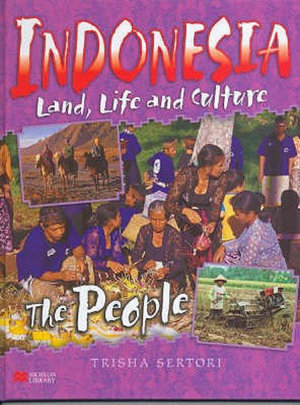



Source: Picryl
Read through the resources below to learn more about the global region of South-East Asia and its biomes.
Southeast Asia is located, just like it sounds, in the southeast portion of the continent of Asia. Read through this website to learn more about this global region.
This online directory lists the countries of South-East Asia and provides links to information about each country.
Southeast Asia, is a vast region of Asia situated east of the Indian subcontinent and south of China. It consists of two dissimilar portions: a continental projection (commonly called mainland Southeast Asia) and a string of archipelagoes to the south and east of the mainland (insular Southeast Asia). Extending some 700 miles (1,100 km) southward from the mainland into insular Southeast Asia is the Malay Peninsula; this peninsula structurally is part of the mainland, but it also shares many ecological and cultural affinities with the surrounding islands and thus functions as a bridge between the two regions. Read through this article to learn more.
Southeast Asia consists of eleven countries that reach from eastern India to China, and is generally divided into “mainland” and “island” zones. The mainland (Burma, Thailand, Laos, Cambodia, and Vietnam) is actually an extension of the Asian continent. Read through this website to learn more.
The Southeast Asian rainforests are the oldest, consistent rainforests on Earth, dating back to the Pleistocene Epoch 70 million years ago. It has a biological richness and diversity unequaled by that of the Amazon or African rainforests. Yet Southeast Asia is losing its rainforests faster than any equatorial region, and has the fewest remaining primary rainforests. It is projected that most of the primary rainforests of Southeast Asia will be destroyed in the next 10 years. Read through this website to learn more.
Southeast Asia is diverse and complex, accounting for 11 different economies, which all share a vibrancy that can be seen in the region’s young and increasingly urbanised, connected and educated populations. Read through this website to learn more about the South-East Asia region and its connection and influences on Victoria.
Borneo Lowland Rain Forests are the richest rainforests in the world and rival the diversity of New Guinea and the Amazon. Read through this fact sheet to learn more about the rainforests of South-East Asia, including the biodiversity they contain and the threats they face.
The Southeastern Indochina Dry Evergreen Forests [IM0210] ecoregion occurs in a broad band across northern and central Thailand into Laos, Cambodia, and Vietnam. Dry evergreen forest is more appropriately called semi-evergreen forest because a significant proportion of canopy tree species are deciduous at the height of the dry season. Read through this fact sheet to learn more.


 Culture in Thailand
by
Culture in Thailand
by
 Southeast Asia, Australia and the Pacific realm
by
Southeast Asia, Australia and the Pacific realm
by
 Indonesia and Jakarta
by
Indonesia and Jakarta
by
 The arts
by
The arts
by
 The islands
by
The islands
by
 Cambodia
by
Cambodia
by
 Vietnam
by
Vietnam
by
 Indonesia
by
Indonesia
by
 Thailand
by
Thailand
by
 Malaysia
by
Malaysia
by